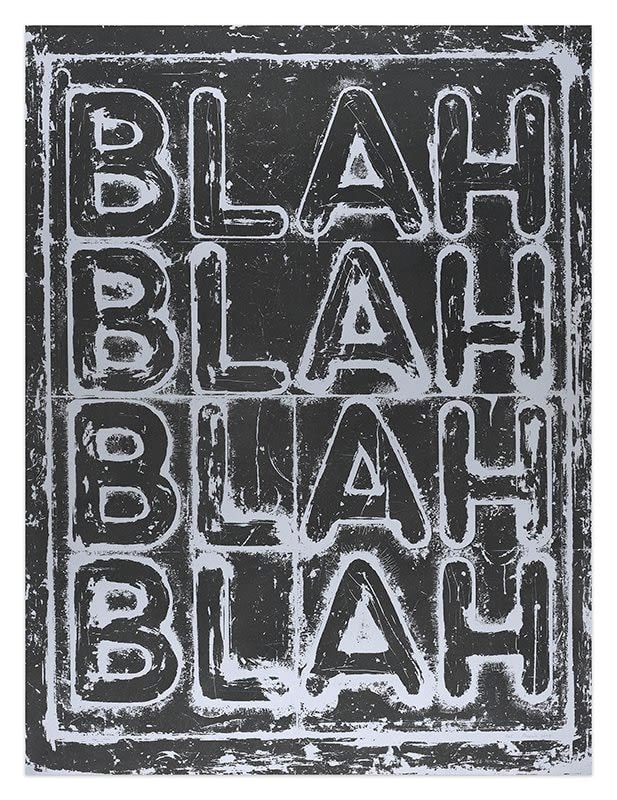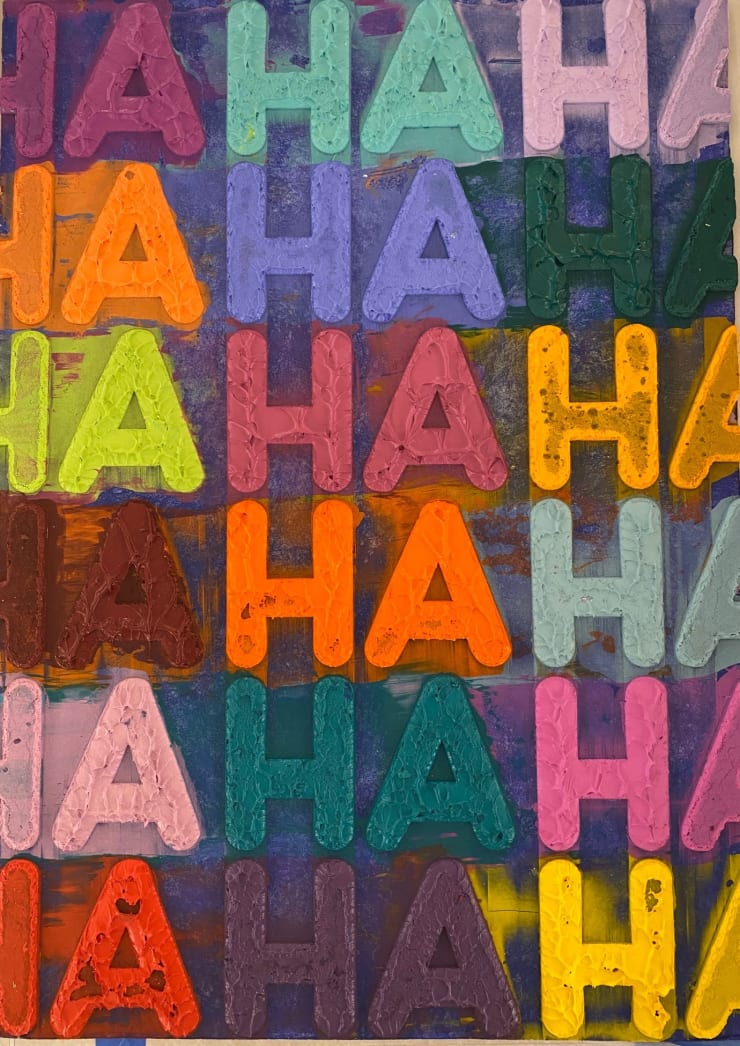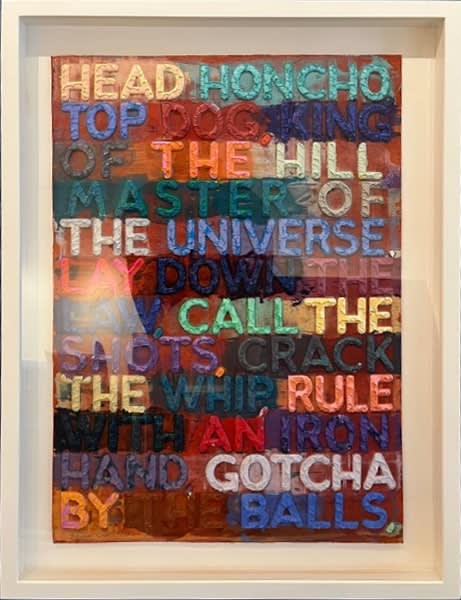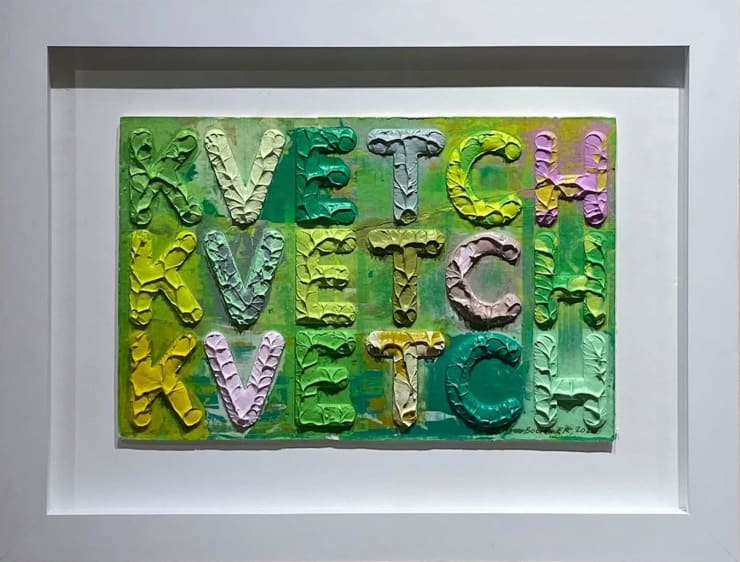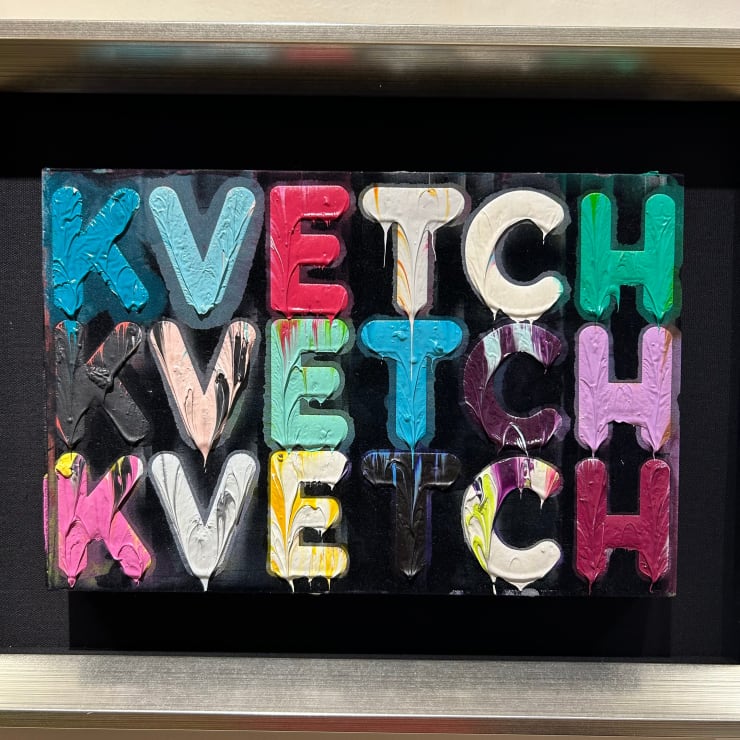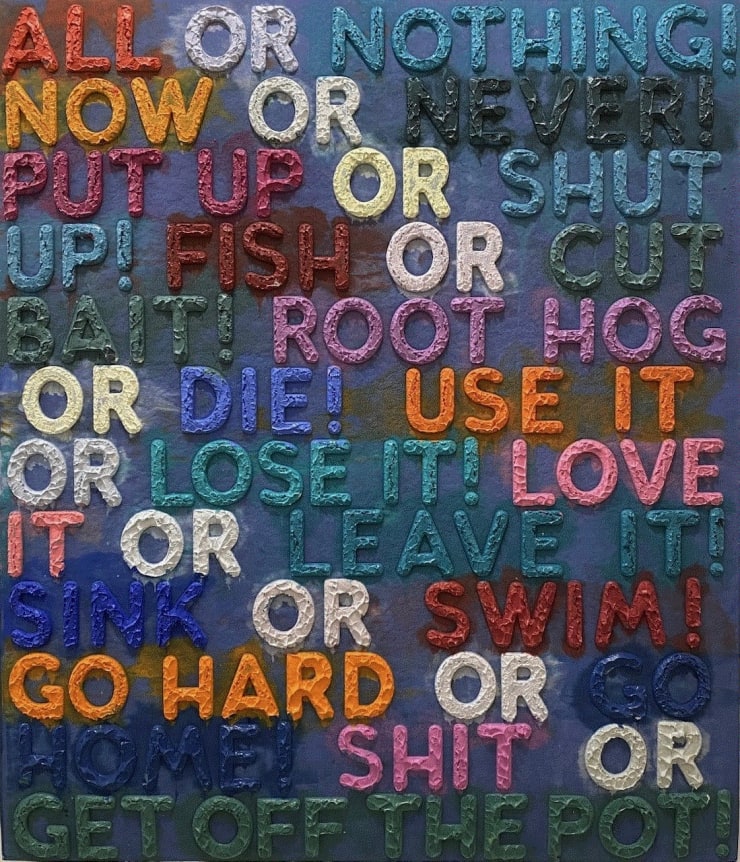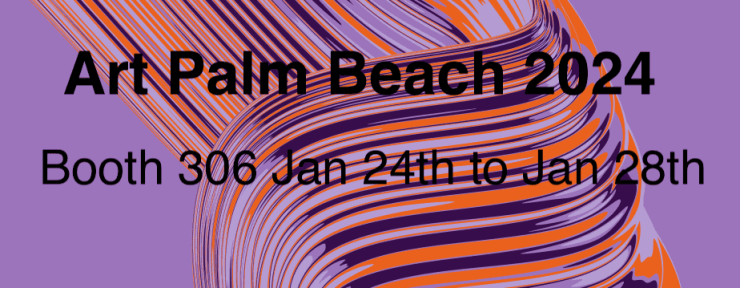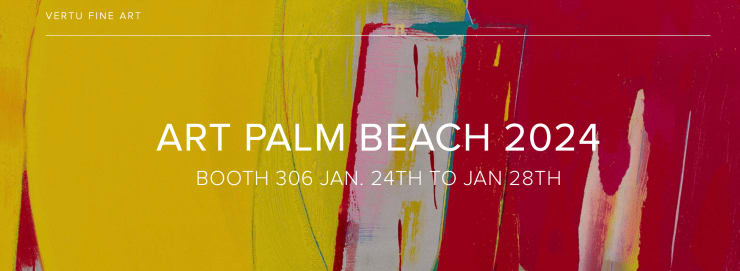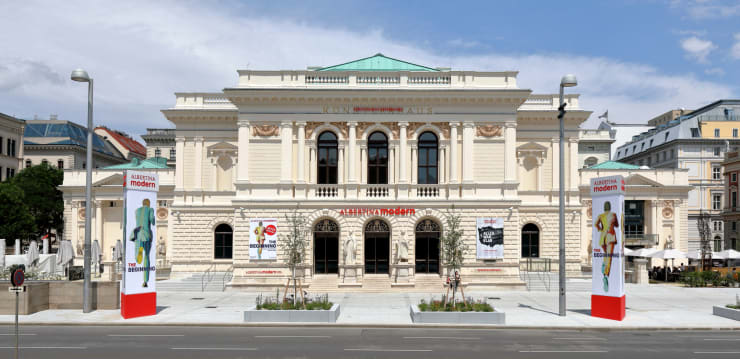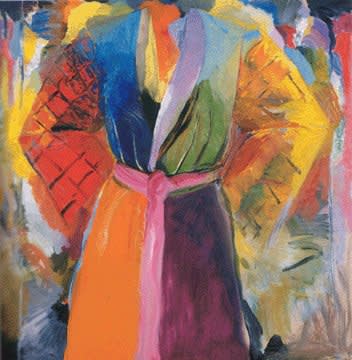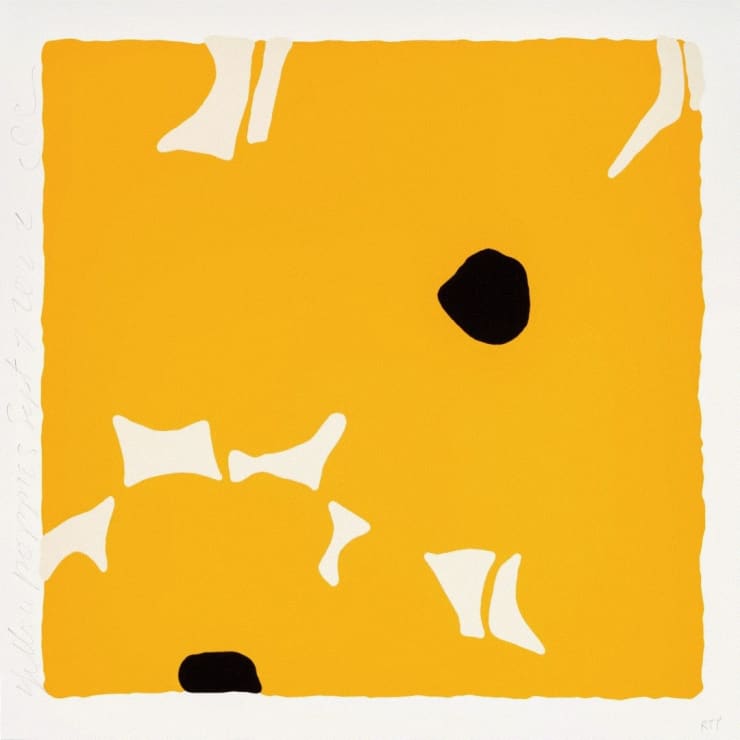Mel Bochner
-
 Mel BochnerAll or Nothing, 2023Monotype in oil collage, engraving and embossment on handmade paper30 x 25 1/2 in
Mel BochnerAll or Nothing, 2023Monotype in oil collage, engraving and embossment on handmade paper30 x 25 1/2 in
76.2 x 64.8 cmSigned and Dated -
 Mel BochnerBlah,Blah,Blah, 2022Silkscreen on Lanaquarelle paper62 x 47 ins 157.48 x 119.38 cmSigned and numbered
Mel BochnerBlah,Blah,Blah, 2022Silkscreen on Lanaquarelle paper62 x 47 ins 157.48 x 119.38 cmSigned and numbered -
 Mel BochnerBlah,Blah,Blah, 2022Silkscreen on Lanaquarelle paper62 x 47 ins 157.48 x 119.38 cm
Mel BochnerBlah,Blah,Blah, 2022Silkscreen on Lanaquarelle paper62 x 47 ins 157.48 x 119.38 cm -
 Mel BochnerSilence, 2022Cast and pigmented paper75 x 52 1/2 x 4 inchesSigned and Dated
Mel BochnerSilence, 2022Cast and pigmented paper75 x 52 1/2 x 4 inchesSigned and Dated -
 Mel BochnerHa, Ha, Ha, 2021Monoprint in oil collage, engraving and embossment on handmade paper29 7/8 x 22 1/8 ins 76.02 x 56.49 cmSigned and dated on the verso
Mel BochnerHa, Ha, Ha, 2021Monoprint in oil collage, engraving and embossment on handmade paper29 7/8 x 22 1/8 ins 76.02 x 56.49 cmSigned and dated on the verso -
 Mel BochnerHead Honcho, 2020Monoprint in Oil with Collage, Engraving and Embossment on Handmade Paper
Mel BochnerHead Honcho, 2020Monoprint in Oil with Collage, Engraving and Embossment on Handmade Paper
29 3/4 x 20 1/2 “ plus frame29 3/4 x 20 1/2 in
75.6 x 52.1 cmSigned and Dated Lower Left -
 Mel BochnerKvetch, 2020Monoprint in oil collage, engraving and embossment on handmade paper10 x 15 ins 25.4 x 38.1 cmSigned and Dated lower right
Mel BochnerKvetch, 2020Monoprint in oil collage, engraving and embossment on handmade paper10 x 15 ins 25.4 x 38.1 cmSigned and Dated lower right -
 Mel BochnerKvetch, 2014Oil on Velvet7 3/4 x 11 3/4 in
Mel BochnerKvetch, 2014Oil on Velvet7 3/4 x 11 3/4 in
19.7 x 29.8 cmSigned on the verso in sharpie -
 Mel BochnerBlah, Blah, Blah, 2009Oil on velvet24 x 19 ins 60.96 x 48.26 cmSigned on the strecher in sharpie, Verso
Mel BochnerBlah, Blah, Blah, 2009Oil on velvet24 x 19 ins 60.96 x 48.26 cmSigned on the strecher in sharpie, Verso -
 Mel BochnerBlah, Blah, Blah, 2009Oil on velvet24 x 19 ins 60.96 x 48.26 cm
Mel BochnerBlah, Blah, Blah, 2009Oil on velvet24 x 19 ins 60.96 x 48.26 cm
Mel Bochner
Mel Bochner is an American painter, printmaker, linguist and pioneer of the Conceptual Art movement.
Early Life and Education
Mel Bochner was born into a traditional Jewish home, in Pittsburgh, in 1940. His father was a sign painter, for whom he apprenticed, and which led to Bochner’s interest in incorporating words in his art.
Bochner’s artistic talent was apparent at a very young age. In third grade he was chosen to attend Saturday classes at the Carnegie Art Museum in Pittsburgh. “My mother saved everything I ever did—even the first-grade papers where you traced over the numbers. Some of them look remarkably like what I do now!” he said. “My work is about unlearning what I learned, then re-learning it from my own experience.”
After graduating with a BFA from Carnegie Mellon University in 1962, Bochner went through what he calls his beatnik period, a time when he questioned his decision to become an artist. He went to San Francisco, traveled around Mexico and wound up staying with a friend in Chicago. He audited classes at Northwestern University and became interested in linguistic philosophy. Bochner began spending more time at the Art Institute of Chicago than in class and found the motivation to resume painting.
Career
Bochner went to New York in 1964 and got a job as a security guard at the Jewish Museum. (It just so happened that Minimalist artist Brice Marden had quit the job the day before). Bochner painted at night, in his twenty-dollar-a month apartment on First Avenue and worked during the day. After a year of working at the museum, he was found napping and was fired, which freed him up to take a job, teaching art history, at the School of Visual Arts.
His first exhibit at the school was the seminal 1966 show called, Working Drawings And Other Visible Things On Paper Not Necessarily Meant To Be Viewed As Art. Bochner’s initial idea was to ask his artist friends to loan him their working drawings for the exhibit, but there was no money to frame each piece, so Bochner compiled notebook pages of print material and working drawings by Donald Judd, Carl Andre, Jo Baer, John Cage, Tom Clancy, Dan Flavin, Milton Glaser, Dan Graham, Eva Hesse, Alfred Jensen, Michael Kirby, Sol LeWitt, Robert Mangold, Robert Moskovitz, Robert Smithson, and others into a xeroxed volume which was then presented in four identical copies, each on their own pedestal. The exhibit turned out to be the beginning of the Conceptual Art movement in the U.S.
In the 1970s, Bochner returned to painting and his work has evolved into a combination of words and color. He not only paints each letter by hand in most paintings, but also uses an etching technique and press to create some of his industrial-looking work.
In the past few years, Bochner has had major exhibits at the Whitechapel Gallery in London, Haus der Kunst in Munich and the Museu de Arte Contemporânea de Serralves in Portugal and the Jewish Museum. His works are included in the permanent collections of major museums and galleries throughout the world.
-

Recent Acquisitions at VFA
We've Moved! May 21, 2025A painting is a kind of love letter to the audience. - Donald Sultan Donald Sultan uses tough textures to create soft, romantic works. He...Read more -

The Work of Donald Sultan, Mel Bochner and more...
VFA at the Palm Beach Modern + Contemporary Art Fair March 19, 2025There is both strength and softness in the art of Donald Sultan (b.1951), just as there is strength and softness in the artist himself. Sultan...Read more -

VFA at the The Palm Beach Modern + Contemporary Art Fair
Booth C2. Friday, March 21st through Sunday March 23 March 12, 2025The Palm Beach Modern + Contemporary (PBM+C) will open its eight edition with a VIP Preview on Thursday, March 20th, from 5pm - 9pm at...Read more -

Remembering Conceptual Artist Mel Bochner
David Hockney: DRAW!. Carmen Herrera's Work at the White House February 19, 2025You know what I’m saying, so ‘blah blah blah’ - Mel Bochner Conceptual artist Mel Bochner died on Wednesday, February 12 at age 84. Bochner...Read more -

Mel Bochner and Damien Hirst Go Back to Basics
Sotheby's to Auction Banana on November 20th November 8, 2024If you write something, the words aren’t yours, but the thoughts are yours. That opened my eyes to what felt like a different way to...Read more -

Featured & Favorite Artists at VFA
September 3, 2024This past weekend was an exciting one in New York for art enthusiasts. Art on Paper 2024 , was held during Armory Art Week, celebrating...Read more -

Opie, Longo, Katz & More at Hamptons Fine Art Fair, 2024
Attendance expected to reach 10,000 July 10, 2024The Hamptons Fine Art Fair has become the largest cultural event in the Hamptons. About 8,500 guests attended last year’s Fair. This year, attendance is...Read more -

VFA at the Hamptons Fine Art Fair 2024
July 11-14, 2024 July 2, 2024We hope you will join us at the Hamptons Fine Art Fair which runs from July 11-14, 2024. The fair, now in its 18th year,...Read more -

Art Palm Beach 2024
January 24, 2024Art Palm Beach 2024 has been exciting to plan and, with more than eighty galleries from around the world exhibiting modern and contemporary art, it...Read more -

VFA at Art Palm Beach 2024
January 18, 2024Art Palm Beach is back! This year’s show will be held from January 24th to 28th at the Palm Beach County Convention Center. We’ll be...Read more -

Merry and Bright: Art for the Holidays
December 19, 2023David Hockney has always loved technology. He embraced the Polaroid camera when it first appeared, has been painting on his his iPad for years and...Read more -

VFA at Art Miami 2023
November 29, 2023Vertu Fine Art will be exhibiting the finest Modern and Contemporary art at Art Miami 2023. The 33rd Edition of Art Miami 2023 runs from...Read more -

Mel Bochner: Ha Ha Ha
September 12, 2023There’s no such thing as innocent language, as we’ve learned over the last 75 years, 100 years. That has been made perfectly clear by the...Read more -

Yoshitomo Nara and Roy Lichtenstein at Albertina Modern
VFA at Art on Paper September 7, 2023Many people say that these are children but I think these are not children that I paint. Therefore, they are no particular children but for...Read more -

VFA at Art on Paper, September 7-10 at Pier 36
August 31, 2023As the print evolves, it tells you, you tell it. You have a conversation with a print — Helen Frankenthaler, 1988 VFA will be part...Read more -

Jim Dine Examines Jim Dine; Keith Haring's Work at The Broad
VFA at the Hamptons Fine Art Fair This Weekend July 12, 2023I have come to terms with a lot of things, because, when it’s all said and done, there’s really very little one can do about...Read more -

VFA at the Hamptons Fine Art Fair, 2023
July 5, 2023We’re looking forward to another wonderful edition of the Hamptons Fine Art Fair. This year’s Fair begins with a private viewing on Thursday, July 13th...Read more -

Harland Miller and Mel Bochner Use Their Words
June 21, 2023After graduation from Chelsea School of Art with an MFA in 1988, Harland Miller (b.1964) spent a year in Paris. He felt homesick at times...Read more -

VFA at The Palm Beach Modern + Contemporary International Fair
March 21, 2023Vertu Fine Art will be at the Palm Beach Modern + Contemporary International Fair held at the Palm Beach Convention Center from March 23 through March 26, 2023. This is the sixth edition of of South Florida’s most celebrated winter art fair.Read more -

Added Dimensions: Fine Art Prints and more at VFA
December 13, 2021It’s been wonderful to get back to seeing artworks up close and in person again. The ability to view fine art prints on line has...Read more


